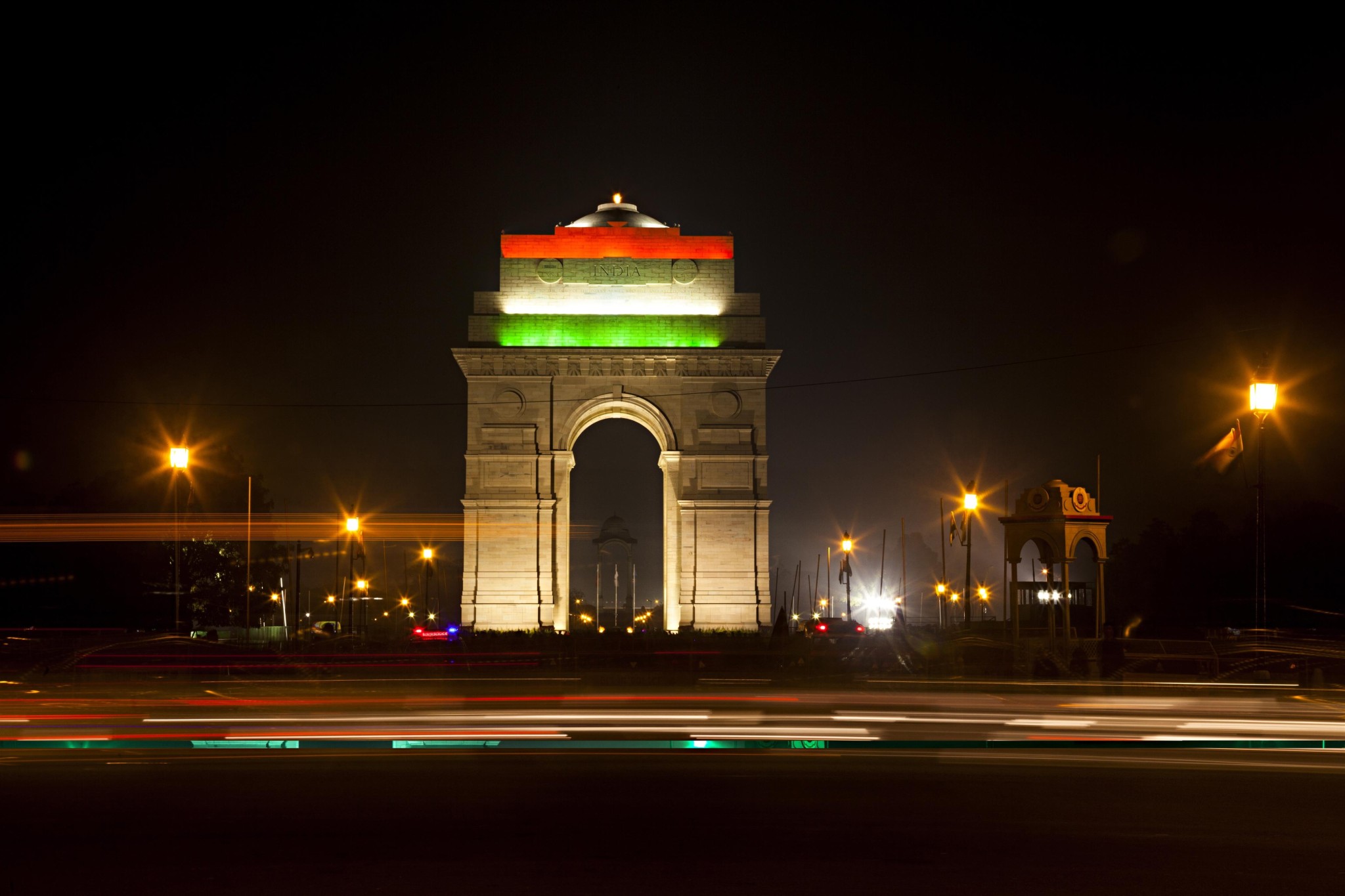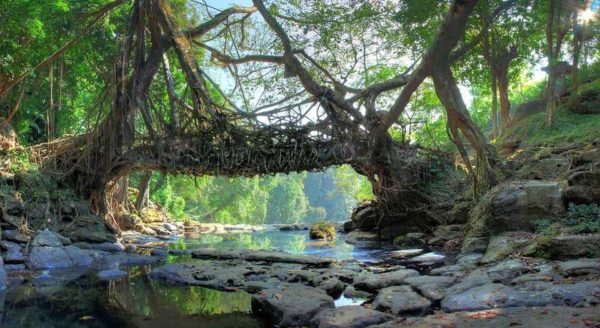Are you a nature lover seeking a break from visiting beaches and hill stations? Is there a wildlife enthusiast within you, dreaming to explore the verdant beauty of Indian forests and watch the unique world of wildlife species? Be ready for an adventurous journey through the stunning National Parks in India.
Let us Traverse the National Parks in India
The wonderful land of India is dotted with hundreds of National Parks that protect wildlife and preserve the invaluable biodiversity of the nation. The exciting flora and fauna and the picturesque beauty of the landscapes attract thousands of nature lovers from all over the world. An enthralling elephant safari or jeep safari through the alluring wilderness of jungles to view the Bengal Tigers, Asian Elephants, One-horned Rhinos and many endangered species in proximity will be quite thrilling and exciting. I am presenting here a list of top 6 amazing National Parks in India that are worth visiting.
1. Jim Corbett National Park : Call of Wild from the Land of Gods
Jim Corbett National Park, renowned for its richness in Bengal Tigers, is situated in the foothills of Himalayas in the sacred state of Uttarakhand. Established in 1936 as the first National Park of the country, it was declared a Tiger Reserve in 1973. Originally known as Hailey National Park it was renamed in the honor of the great conservationist and the legendary tiger hunter Jim Corbett. There are more than 200 Royal Bengal Tigers in Corbett. Apart from tigers, you can spot Asiatic Elephants, Wild Boar, Leopards, Sloth Bear, Wild Bear, Barking Deer, Hog Deer, Jackal, Crocodile and over 600 species of resident and migratory birds. This Eco tourist destination, rich in flora and fauna, is spread over 520 Sq.km comprising mountains, valleys, grasslands and dense moist deciduous forests.
 For the convenience of the tourists, Corbett is divided into six different zones, which are open at different times of the year. You can view wildlife at proximity by enjoying a thrilling Jeep safari or Elephant safari. If you are an adventurous person, you can indulge in trekking, river crossing, angling, rappelling, jungle drive, nature walk, and many more fascinating activities. It is one of the most-visited National Parks in India with more than 2 lakhs tourists visiting every year.
For the convenience of the tourists, Corbett is divided into six different zones, which are open at different times of the year. You can view wildlife at proximity by enjoying a thrilling Jeep safari or Elephant safari. If you are an adventurous person, you can indulge in trekking, river crossing, angling, rappelling, jungle drive, nature walk, and many more fascinating activities. It is one of the most-visited National Parks in India with more than 2 lakhs tourists visiting every year.
November to June is the best time to visit here when all the tourist zones will be open. Accommodation is available even for a stay inside the forest. It is 260 km away from Delhi and is accessible by bus. Ramnagar at 15 km away is the nearest railway station. New Delhi international airport is at 295 km. Read more..
2. Ranthambore National Park – a Captivating Blend of History and Nature
Ranthambore National Park is situated at the meeting point of Vindhyan Plateau and Aravali Hill, in the Sawai Madhopur district of South-Eastern Rajasthan. Spread across an area of 392 Sq.km, with an exciting diversity of flora and fauna, it is one of the finest National Parks in India where you can spot tigers at any time. This former hunting ground of the Maharajas of Jaipur was declared as a Project Tiger in 1973 and became a National Park in 1980. It was named after the historic Ranthambore Fort of 10th century that lies within the park. The landscape is formed of massive rock formations, steep cliffs, streams and lakes, and the terrain varies between dry deciduous forests to open grassy meadows. Apart from Tigers, it is a home for a large number of Leopards, Elephants, Chinkara, Hanuman Langurs, Wild Boar, Bear, Macaques, Cital, Jackals, Sambar, and huge varieties of birds and reptiles.
 The whole Park is divided into ten different zones for the convenience of the tourists. Safari rides are carried out either in a 6-seater open top gypsy or in a 20-seater open top canter. The majestic Ranthambore Fort inside the park, which stands 700 feet above the surrounding plain, is a UNESCO World Heritage site and a major attraction of the Park.
The whole Park is divided into ten different zones for the convenience of the tourists. Safari rides are carried out either in a 6-seater open top gypsy or in a 20-seater open top canter. The majestic Ranthambore Fort inside the park, which stands 700 feet above the surrounding plain, is a UNESCO World Heritage site and a major attraction of the Park.
The best time to visit Ranthambore National Park is from October to June. Accommodation is available ranging from budget guest house to luxury resorts. Nearest Railway Station is Sawai Madhopur at 11 km away and the nearest airport is Jaipur at 145 km. Kota to Rantambore is 114 km and can be covered within 2 hours by taxi. Read more..
3. Kanha National Park : the Fascinating Settings of “the Jungle Book”
Kanha National Park, with its lush green forests, ravines, streams, lakes and open grassy meadows, has the honor for providing inspiration to Rudyar Kipling to write his famous book “The Jungle Book”. Spread over an area of 940 Sq.km in two districts Mandla and Balaghat of Madhya Pradesh, Kanha is one of the largest National Parks in India. Established as a wild life sanctuary in 1933, it became a National Park in 1955 and Tiger Reserve in 1974. It has a wonderful landscape with Sal and other mixed trees in the low land, and tropical moist dry deciduous forests and bamboos in the highland. Other than Royal Bengal Tigers, Kanha is famous for survival of Barasingha, the only species of Swamp Deer, which is popularly called as “the Jewel of Kanha”.
 Other animals commonly seen include Leopards, Indian Gaur, wild cats, wild dogs, foxes, jackals, sambar, spotted deer, barking deer and four-horned deer. With jeep safari or elephant safari, you can have a closer look of the wild life. Bamni Dadar, a plateau, also known as Sunset point, is an ideal location to enjoy the beautiful landscape and the rare views of wildlife, in the background of a stunning sunset.
Other animals commonly seen include Leopards, Indian Gaur, wild cats, wild dogs, foxes, jackals, sambar, spotted deer, barking deer and four-horned deer. With jeep safari or elephant safari, you can have a closer look of the wild life. Bamni Dadar, a plateau, also known as Sunset point, is an ideal location to enjoy the beautiful landscape and the rare views of wildlife, in the background of a stunning sunset.
The Park is closed during monsoon season from July to October. December to March is the ideal time to visit. Accommodation is available to suit all classes of tourists. The nearest railway station and airport are at Jabalpur, which is 160 km from the Park. Read more..
4. Kaziranga National Park : a Wildlife Safari in the Lap of Brahmaputra
Kaziranga National Park, a UNESCO World Heritage site located in Assam, is popular for world’s largest population of One-horned Rhinoceroses. Declared as a Tiger Reserve in 2006, Kaziranga boasts the highest density of tigers among the protected wildlife areas in the world. As per the latest statistics, there are 2401 Rhinos and 118 tigers in the Park. In addition, it is a home to a large population of elephants, eastern swamp deer, Asiatic water buffaloes, leopards, gaur, sambar, wild boar, hog deer, jungle cat, jackals, etc., and a variety of migratory birds, scavengers, water birds and game birds. Spread over an area of 430 Sq.km., the Park has a unique biodiversity constituting of dense moist broad-leaf tropical forests, marshland, and vast stretches of tall elephant grass. The Park lies in the flood plains of River Brahmaputra and every year the region is affected by the flood water of the river.
 The amazing Rhino population and the biodiversity of Kaziranga make it one of the most sought after National Parks in India. You can observe the beauty of nature, wildlife and the avian life by elephant safari or jeep safari, which are arranged to cover four different zones of the Park. Observation towers are available to view the wild life conveniently.
The amazing Rhino population and the biodiversity of Kaziranga make it one of the most sought after National Parks in India. You can observe the beauty of nature, wildlife and the avian life by elephant safari or jeep safari, which are arranged to cover four different zones of the Park. Observation towers are available to view the wild life conveniently.
The Park is closed during monsoon season from 1st May to end October. The best time to visit Kaziranga is between November and April. Accommodation is available by private as well as Tourism Department, starting from budget to luxury. Nearest railway station is Furkating at 75 km away. Guwahati airport is located at 217 km and Jorhat at 97 km. Read more..
5. Bandipur National Park : the Enchanting Beauty of Nilgiri Biosphere
Bandipur National Park, situated in the Chamarajanagar district of Karnataka, amidst the picturesque surroundings of Western Ghats, is one of the most beautiful and well maintained National Parks in India. Covering an area of 874 Sq.km, it is a part of Nilgiri Biosphere Reserve, one of the biggest biosphere reserves in India. Designated as a Tiger Reserve in 1973, it is a home to more than 75 numbers of tigers and over 3000 Asian elephants. It is one of the richest wildlife areas of the country where you can see Leopards, Gaurs, Sambar, sloth bear, Gray Langur, Chital, Dhole, Wild boar, and more than 200 species of birds. The region is blessed with lush green vegetation, deciduous and evergreen forests with teak and rosewood trees and open grassy lands. Moyar River flows in the south boundary and irrigates the area.
 The vast open spaces of the Park make it convenient for the tourists to watch herds of elephants in their natural habitats. Since it is located on the way connecting Mysore and the famous Hill station Ooty, it is always crowded with tourists. You can watch the breathtaking views of the Park and the wild animals by a Jeep safari, Mini Bus safari or Elephant safari to be arranged by the Forest Department.
The vast open spaces of the Park make it convenient for the tourists to watch herds of elephants in their natural habitats. Since it is located on the way connecting Mysore and the famous Hill station Ooty, it is always crowded with tourists. You can watch the breathtaking views of the Park and the wild animals by a Jeep safari, Mini Bus safari or Elephant safari to be arranged by the Forest Department.
October to March is the ideal time to visit the Park. Accommodation is available near the park with varieties of choices. It is 80 km away from both Mysore and Ooty and is easily accessible by buses plying regularly. Major railway station is Mysore at 80 km and the nearest airport is Bangalore international airport at 220 km from Bandipur. Read more..
6. Great Himalayan National Park: Abode of Mystic Beauty and Adventure
Located at about 60 km from Kullu in Himachal Pradesh and protected on three sides by the towering Himalayan Mountains, the Great Himalayan National Park, with its enchanting beauty, attracts thousands of nature lovers and adventure tourists. Established in 1984 and declared as a National Park in 1999, it became a UNESCO World Heritage site in 2014 under the criteria of biodiversity conservation. The Park is spread over an area of 755 Sq.km and it has an additional 266 Sq.km Eco zone where the original inhabitants of the Park area are occupied. With a variation in altitude from 1500 m to 6000 m, it has a complex geography and a variety of flora and fauna such as glacial, alpine, temperate and sub-tropical forests, dominated by trees, herbs, shrubs and medicinal plants. This pristine Himalayan eco system is a home for over 375 species of fauna, including 31 species of mammals and 181 species of birds. Some of the animals that can be spotted here include Snow Leopard, Himalayan Brown Bear, Blue sheep, Musk Deer, Himalayan Tahr, and Goral.
 Besides its mystic beauty and biodiversity, the Great Himalayan National Park is renowned for adventurous trekking, rock climbing and river crossing. Trekking in the Park is challenging and highly adventurous, which require preparation and stamina, and hence most of the visitors trek in the Eco zone only.
Besides its mystic beauty and biodiversity, the Great Himalayan National Park is renowned for adventurous trekking, rock climbing and river crossing. Trekking in the Park is challenging and highly adventurous, which require preparation and stamina, and hence most of the visitors trek in the Eco zone only.
There are limited accommodation facilities within the Park and Eco zone, but a variety of options are available at Kullu, starting from budget to luxury hotels and resorts. September to November is the best time to visit the Park. Chandigarh is the nearest railway station at 300 km away, from where you can get taxi or bus to Kullu. Nearest airport is Bhunter airport at about 60 km from the Park.
All these National Parks in India have something unique and refreshing to offer. Explore them and see yourself the inimitable features and enjoy a memorable vacation in the wilderness of jungle. Read more..












